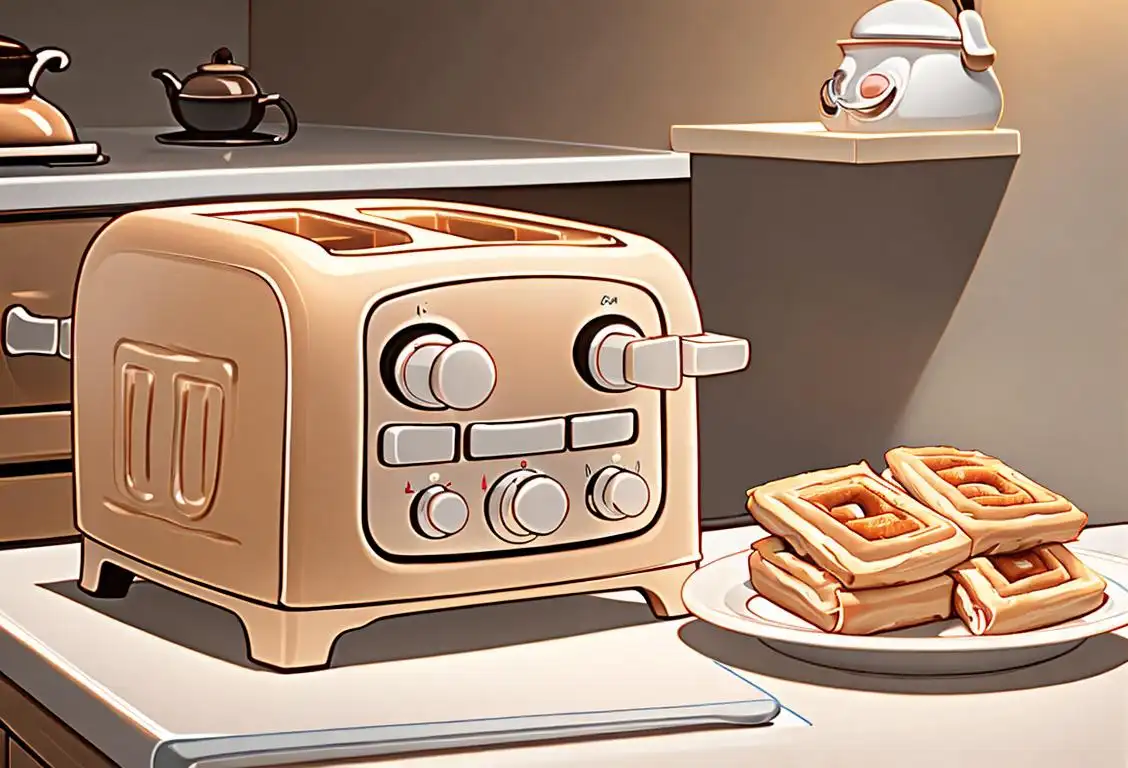National Tv Dinner Day

Hey there, TV dinner lovers! Have you ever been too lazy to cook a proper meal and just popped a frozen meal in the microwave? Well, you're not alone! National TV Dinner Day is here to celebrate those glorious, convenient meals that have saved us from dishwashing and actual cooking. So, grab your remote and get ready to dig into this tasty article!
When is Tv Dinner Day?
It's national tv dinner day on the 10th September.
The Origin of National TV Dinner Day
If you're wondering how this day came to be, let's travel back in time to the 1950s, an era of technological advancements and changing lifestyles. It was a time when more and more families owned televisions, and the demand for quick and easy meals was on the rise.
In 1953, a Swanson employee named Gerry Thomas had a brilliant idea. Swanson was a company known for its poultry, and they found themselves with an overload of Thanksgiving leftovers. Thomas thought, 'Why not package a Thanksgiving dinner in an aluminum tray and sell it as a quick and easy meal?' And that's exactly what they did!
The Rise of the TV Dinner
Swanson's TV Dinners hit the market in 1954 and were an instant hit! They were a complete meal with turkey, mashed potatoes, peas, and even a brownie for dessert. And the best part? They only took about 25 minutes to heat up in the oven.
TV Dinners revolutionized the way people ate, allowing them to enjoy a hot meal while watching their favorite shows. No more worrying about ingredients, chopping, or cooking. Just pop that aluminum tray in the oven, and voila! Dinner is served.
Celebrating National TV Dinner Day
On September 10th each year, we celebrate National TV Dinner Day to recognize the impact TV dinners have had on our lives. It's a day to honor the convenience and nostalgia of microwavable meals. So, whether you prefer classic Salisbury steak, mac 'n cheese, or a cheesy pizza, go ahead and indulge in your favorite TV dinner today!
History behind the term 'Tv Dinner'
1953
The Birth of Convenience
In 1953, the concept of the TV dinner was born out of the need for a quick and easy meal that could be enjoyed while watching television. The Swanson company, a major producer of poultry products, came up with the idea as a solution for the excess turkey they had after Thanksgiving. They packaged precooked meals in aluminum trays, which included turkey, cornbread stuffing, sweet potatoes, and peas, all frozen and ready to be heated in the oven.
1954
The Birth of TV Dinners
In 1954, the term 'TV dinner' was born when the American company Swanson introduced the concept. Swanson had a problem - they had overproduced turkeys for Thanksgiving and had around 260 tons of leftover meat. To avoid wasting it, they came up with the idea of packaging turkey dinners along with sides like cornbread dressing, peas, and sweet potatoes, all neatly compartmentalized into aluminum trays. The meals were then frozen and sold as 'TV dinners', capitalizing on the growing popularity of television. The convenience of a complete meal that could be heated and enjoyed in front of the television was an instant hit.
1954
The TV Dinner Phenomenon
The TV dinner quickly gained popularity and became a cultural phenomenon in the mid-1950s. It provided families with a convenient and affordable option for a complete meal, ready in just minutes. The trays were designed to fit perfectly on a TV tray table, allowing people to enjoy their meal while watching their favorite shows. This new dining experience revolutionized the way Americans consumed their meals, making it possible to enjoy dinner without leaving the living room.
1955
Rapid Expansion and Changing Trends
By 1955, TV dinners had become increasingly popular, and other companies began jumping on the bandwagon. This led to a rapid expansion of the TV dinner industry, with various brands introducing their own versions. The early TV dinners often featured traditional American dishes like meatloaf, fried chicken, and Salisbury steak. As more households acquired televisions, families embraced the convenience of TV dinners, which allowed them to spend less time cooking and more time enjoying their favorite shows.
1959
Expansion of Variety
As the demand for TV dinners grew, so did the variety of options. In 1959, Swanson introduced the first ever frozen TV breakfast. This new addition featured scrambled eggs, bacon, sausage links, and pancakes, providing families with a quick and easy morning meal. The expansion of variety continued with the introduction of TV dinners catering to different tastes, such as fried chicken, Salisbury steak, and spaghetti.
1960s
Cultural Impact and Convenience
During the 1960s, TV dinners played a significant role in shaping American culture. They became a symbol of convenience and modern living, catering to the busy lifestyles of families. The introduction of color television in the mid-1960s further enhanced the appeal of TV dinners, as people could now enjoy their meals in full color while watching their favorite programs. TV dinners also began to incorporate international cuisines, offering meals like Chinese stir-fry and Mexican enchiladas, reflecting the changing culinary preferences of the American public.
1980s
Shift in Perception and Healthier Options
In the 1980s, the perception of TV dinners started to shift. With increasing awareness about healthy eating, people began to view TV dinners as highly processed and not particularly nutritious. As a result, the industry had to adapt. Companies started offering healthier options, reducing sodium and fat content, and including more vegetables. The introduction of microwave ovens also revolutionized the TV dinner experience, making them even more convenient and quick to prepare.
1962
Convenience Reaches New Heights
In 1962, Swanson took convenience to new heights by introducing the first microwave-safe TV dinner. This innovation allowed consumers to prepare their meals even faster, making it an even more convenient option for busy households. The introduction of microwave-safe trays marked a significant milestone in the evolution of TV dinners and further solidified their role as a staple of American convenience culture.
1970s
Competition and Evolution
As the TV dinner became increasingly popular, other companies jumped on the bandwagon, introducing their own versions of frozen prepackaged meals. This competition led to an evolution in the quality and variety of TV dinners available. Manufacturers began focusing on improving taste, texture, and nutrition, offering healthier options with lower sodium content and more balanced meals. The TV dinner had come a long way from its humble beginnings to become a mainstay in American households.
Present
Modern Variations and Gourmet TV Dinners
In the present day, TV dinners have evolved beyond their humble beginnings. They now come in a wide range of options, from vegetarian and organic meals to gourmet and chef-inspired creations. Companies strive to cater to diverse dietary preferences and include gluten-free, dairy-free, and low-carb options. Additionally, advancements in packaging technology have made it possible for TV dinners to come in eco-friendly and recyclable containers. Despite their evolution, TV dinners remain a convenient and popular choice for individuals and families looking for a quick and hassle-free meal.
Did you know?
Did you know that Swanson sold approximately 5,000 TV dinners in the first year? Now, they sell over 500 million annually! That's a lot of aluminum trays!Tagged
food fun nostalgiaFirst identified
10th September 2015Most mentioned on
10th September 2015Total mentions
674Other days
Tv Dinner Day
Soft Ice Cream Day
Bite Your Finger Day
Rice Krispie Treat Day
Toaster Strudel Day
Twink Day
Gummy Bear Day
Pepsi Day
Chocolate Day
Iced Tea Day







